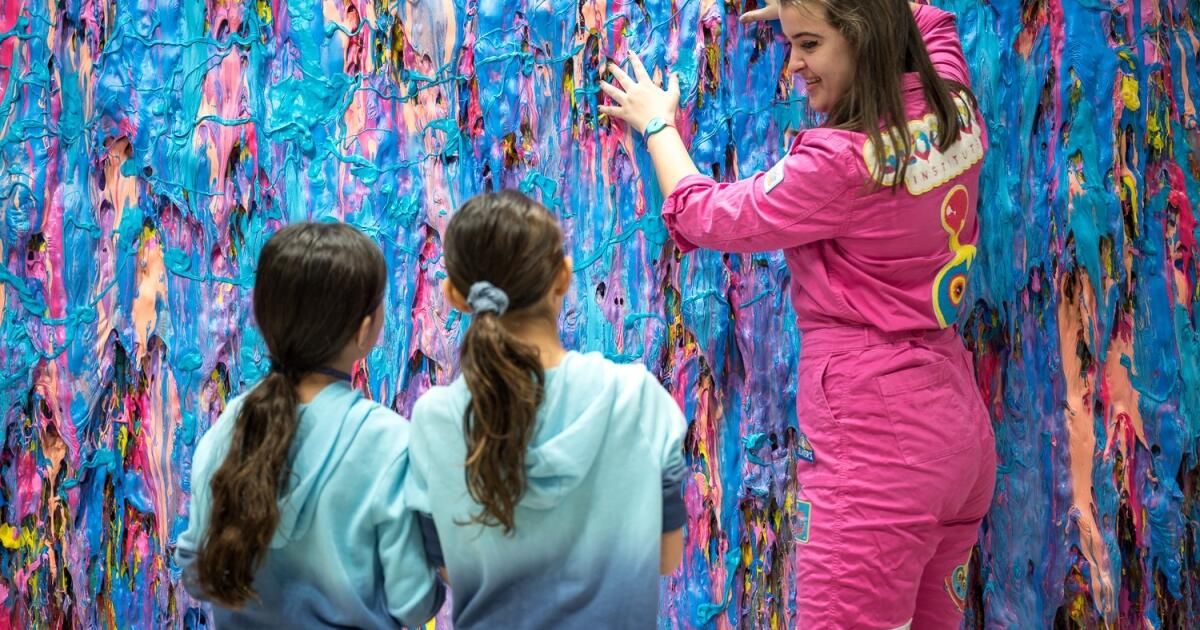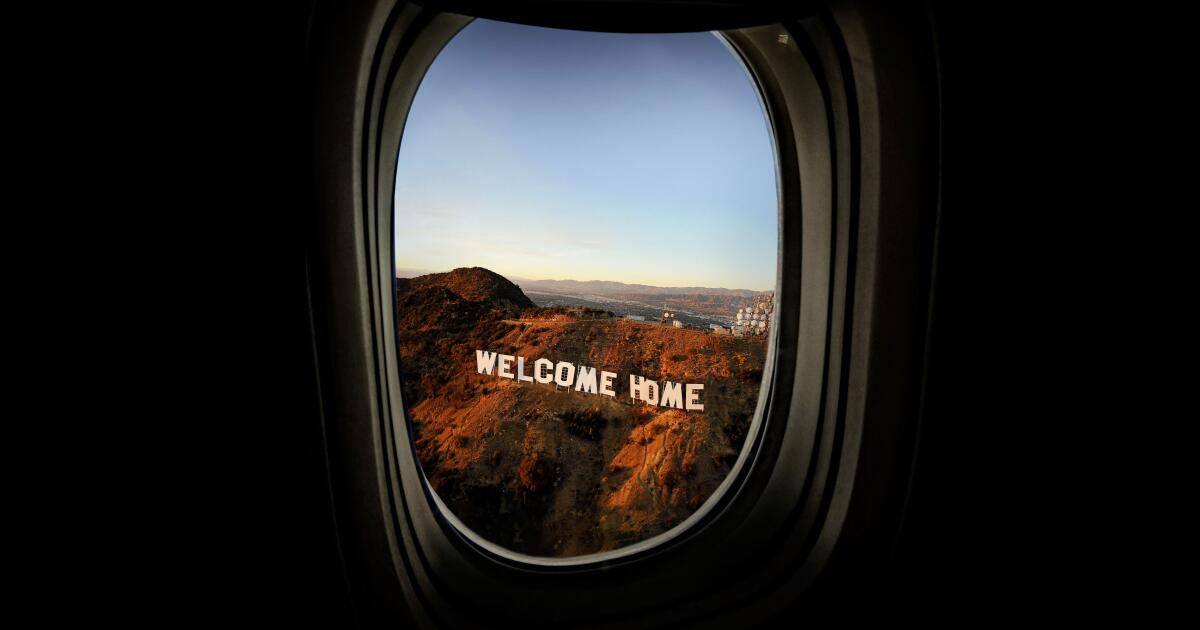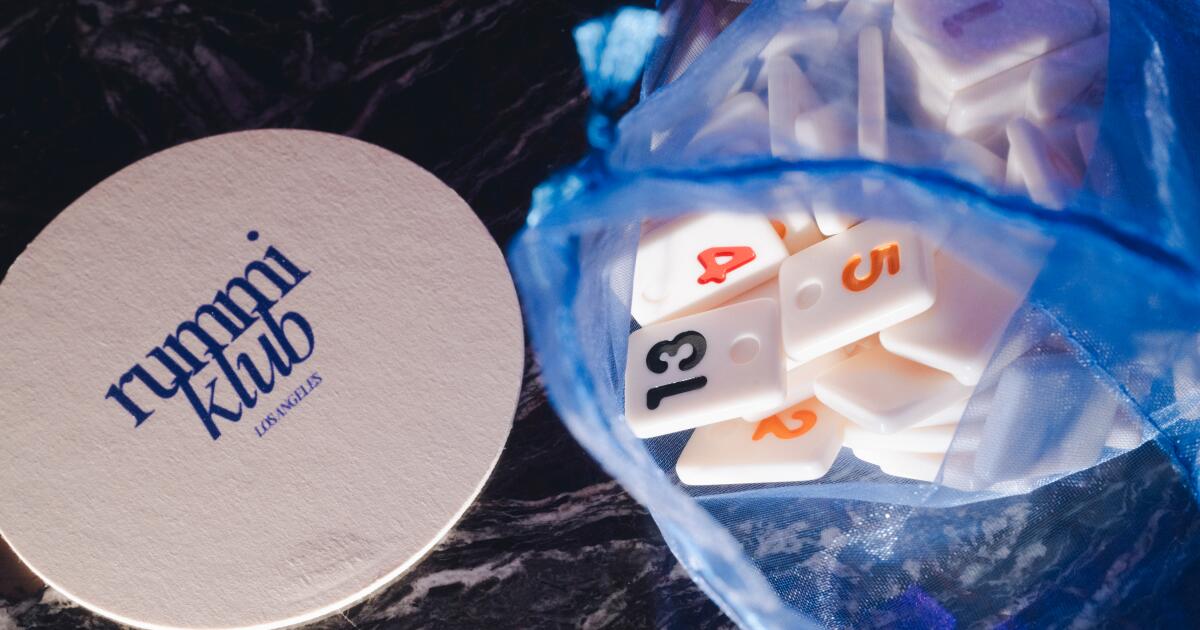When it comes to healing from grief, there is often no simple answer, but there are some recommended solutions. Therapy, of course, is essential and maintaining close contact with the community is often recommended as well.
And maybe, maybe, a little slime?
Such was the case for Karen Robinovitz, one of the co-founders of the Sloomoo Institute, a playful palace dedicated to all things sticky and sticky, where visitors can throw slime, mold it, walk on it, get drenched, and even experience the ASMR benefits of it. Los Angeles will soon be home to the fifth Sloomoo Institute in the US: an outpost will open this summer on Fairfax Avenue across from the Original Farmers Market.
Children play with slime at the Sloomoo Institute location in Atlanta.
(Sloomoo Institute)
Before messy, interactive emporiums became a reality, Robinovitz struggled to get through the day. Robinovitz, a survivor of multiple tragedies, lost her husband seven years ago. Months later, a cousin was killed in the 2018 high school shooting in Parkland, Florida. She lived, she says, with “a very deep, dark depression,” talking to someone (a therapist or various support groups) five days a week. .
“I was really struggling,” Robinovitz says. “You talk about it all the time. At home, I remember him in every corner of my house. In my neighborhood everything reminds you of the person you lost.”
The healing came in an unexpected place and with a surprising substance. A friend visited her then 10-year-old daughter, who brought some slime to play with alone while the adults talked. Robinovitz, however, was paralyzed by the mud.
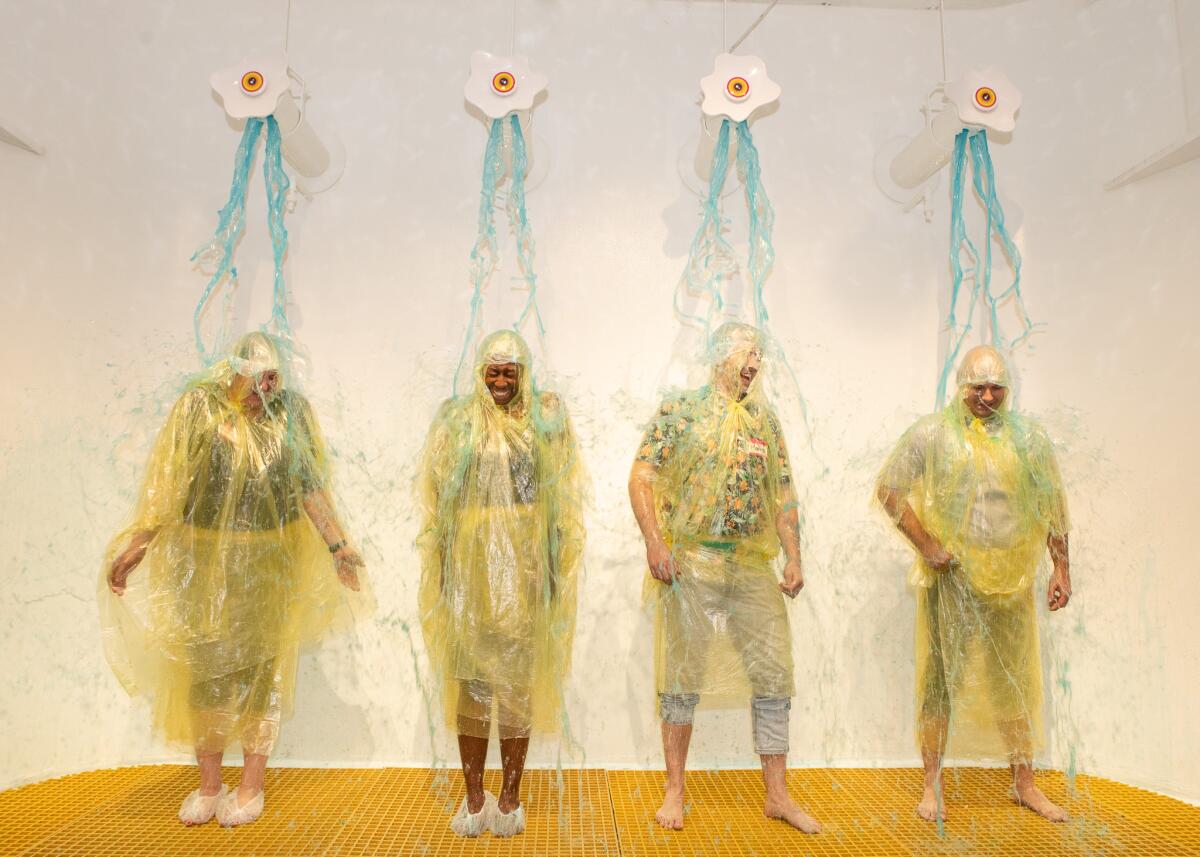
Guests at the Sloomoo Institute in Chicago get drenched in slime.
(Grace Pisula)
“I sat on the floor with her and four hours later I realized she was in a state of total joy,” Robinovitz says. “She had unleashed a part of me that I never thought she would see again, which was the inner child. I was happy playing. As they were leaving, I said this did more for me than all the therapy, all the experts, and all the support groups I had been seeing. I said I need to keep this. I became what is affectionately known as a 'slimming adult.'”
Robinovitz and her old friend Sara Schiller created the Sloomoo Institute. The first location opened in late 2019 in New York, followed by Sloomoo Institutes in Atlanta, Chicago, and Houston.
This isn't just an immersive “pop-up,” says Robinovitz, as the two signed a long-term lease with the intention of staying in Los Angeles, perhaps even taking advantage of the city's creative class to expand their viscosities. pets and creatures to other media. But for now, their mission is to fuse the silly with a little science and explore the importance of the game for the sake of playing.
A visit to a Sloomoo Institute takes visitors through several slime stations, some that are very hands-on and others that resemble a light obstacle course. Some are just ridiculous, like a slime slingshot, which allows participants to catapult slime toward another person. (Don't worry, they're safely hidden behind plexiglass.) Stations may focus on touch, such as a blindfolded journey through various sticky textures, while others target more auditory sensations. New to Los Angeles is a sound bath, with art by Randy Polumbo—think reflective surfaces, amorphous shapes, and synchronized sound.
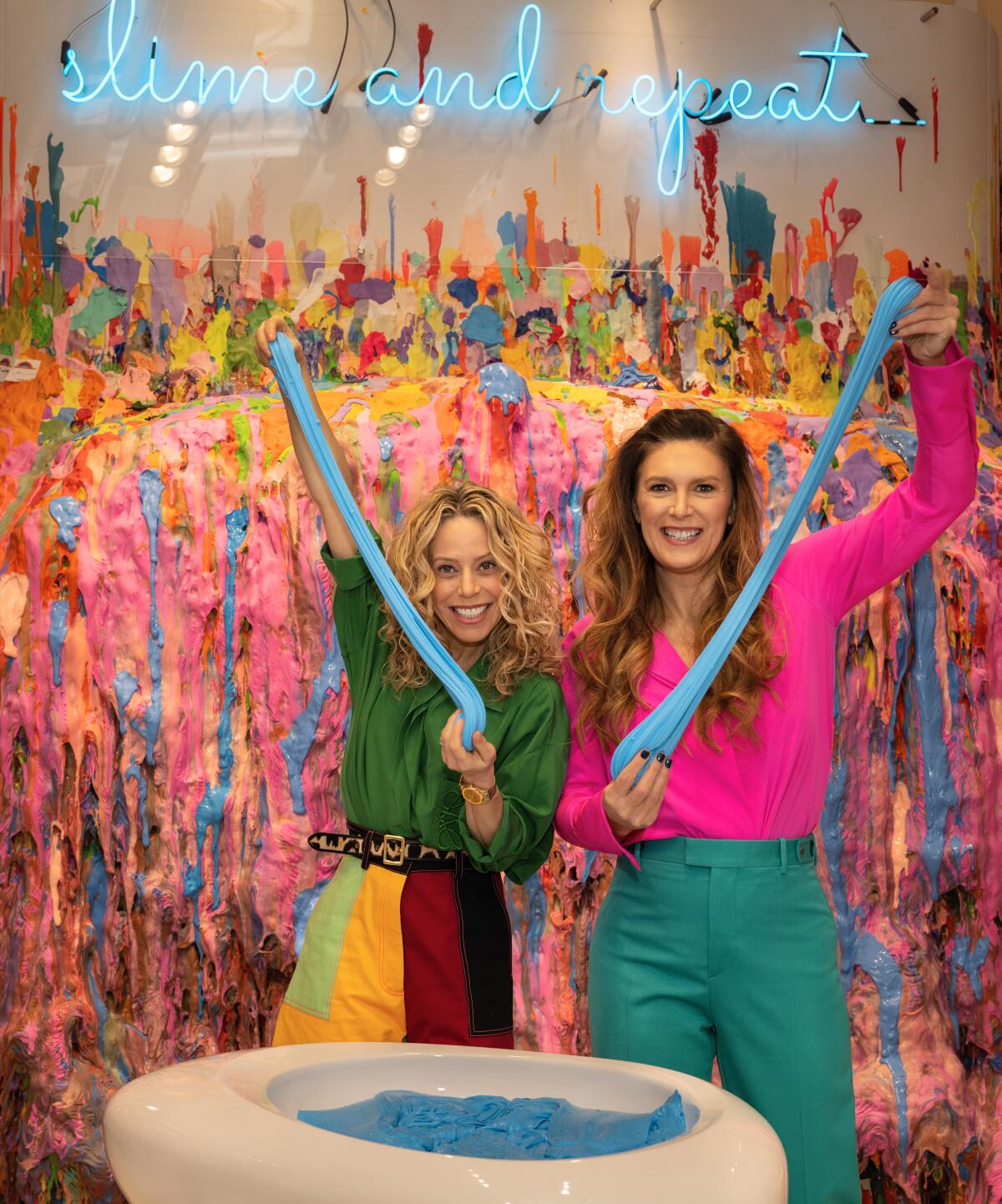
Karen Robinovitz, left, and Sara Schiller founded the Sloomoo Institute to celebrate the power of play.
(Lanna Apisukh)
Meditation-ready bowls and balls will be incorporated into the room, which guests can hit to create their own personal symphonies. One can imagine a cacophony of noise on a crowded day, but Robinovitz and Schiller also talk about it as an event space, a potential home for yoga or more relaxing, psychedelic-inspired sound baths. It taps into the underlying mission of the Sloomoo Institute, as the firm collaborates with psychiatrists like Dr. Judith Joseph to better understand the importance of sensory play.
“Adults, we need this,” says Robinovitz. “I started talking to a psychiatrist friend of mine because I wanted to understand what was happening. At the same time, you are tapping into three or four of your five senses. It's tactile. It makes sounds when you touch it. “All the slimes we make are scented, so they smell really delicious, and smell is the sense most closely related to memory.”
Ticket prices for Los Angeles have not yet been announced, but based on admission in other cities, expect to spend around $40 for general admission to Sloomoo Institute. Those who want to be bathed in the slime (an experience dubbed Sloomoo Falls) will have to pay for an “enhanced experience,” which can double the ticket price. Important to note: You should not come to Sloomoo Institute in your favorite clothing, although ponchos will be provided for slime showers.
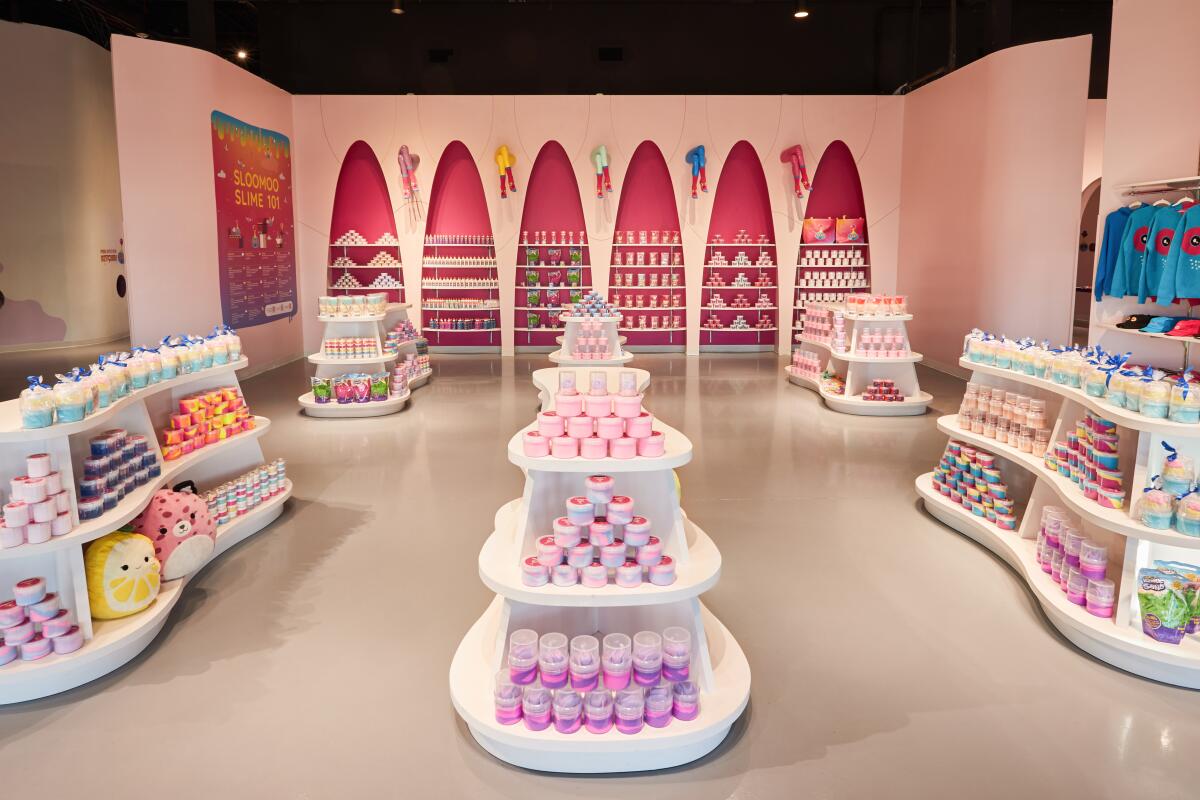
A store inside the Sloomoo Institute.
(Sloomoo Institute)
Schiller had his own personal connection to slime and noted that the game allows participants to step out of their thoughts. Vulnerability, for example, can arise naturally in a given situation. Schiller's oldest daughter has Angelman syndrome, a genetic disorder that can leave children unable to communicate through speech or writing, and her husband has survived multiple bilateral strokes. Slime, she says, has helped foster connections, helping her family better deal with disabilities and stressful times.
“The best thing I say about slime is that when you play with slime, you can have difficult or meaningful conversations without them being awkward,” says Schiller, theorizing that when we are in a relaxed, playful state and focused on a group activity, we feel more comfortable. “But you're not on your device. You are not distracted. You are connected to yourself and you are connected to the other person.”
The two founders are eager to talk about their story, noting that they don't want their personal stories to be divorced from the Sloomoo Institute. Long-time friends, Robinovitz and Schiller have business experience. Robinovitz, for example, launched a talent firm dedicated to digital influencers, while Schiller has an extensive background in the worlds of hospitality and art. Together, they are proud to note that the Sloomoo Institute's workforce is about 10% neurodivergent, as they wanted the spaces to be inclusive and accessible (odor blockers are available, for example, for those sensitive to the Institute's strong odor approach Sloomoo). .
While they're still places full of photo-friendly, social media-ready moments (one area is filled with gigantic slime-inspired chairs), the two are clearly wary of their slime boutiques going the way of so many so-called “museums of slime.” “Instagram.” ”, spaces that used “immersive” as a buzzword for little more than photo opportunities. The centerpiece of the Sloomoo Institute, perhaps, is a “slime bar” where visitors can explore 40 slime colors, 60 fragrances and dozens of textures to create their own creation to take home.
“I know that when I was going through my own personal grief, talking to other women who lost their husbands at young ages was really powerful for me,” Robinovitz says. “I had people going through the same type of pain and I could see that there was potentially a way to live a life without being in pain 24/7. It makes our brand important. This brand would mean nothing without the hardships. “It's not just a fun, candy-colored universe with cute things.”
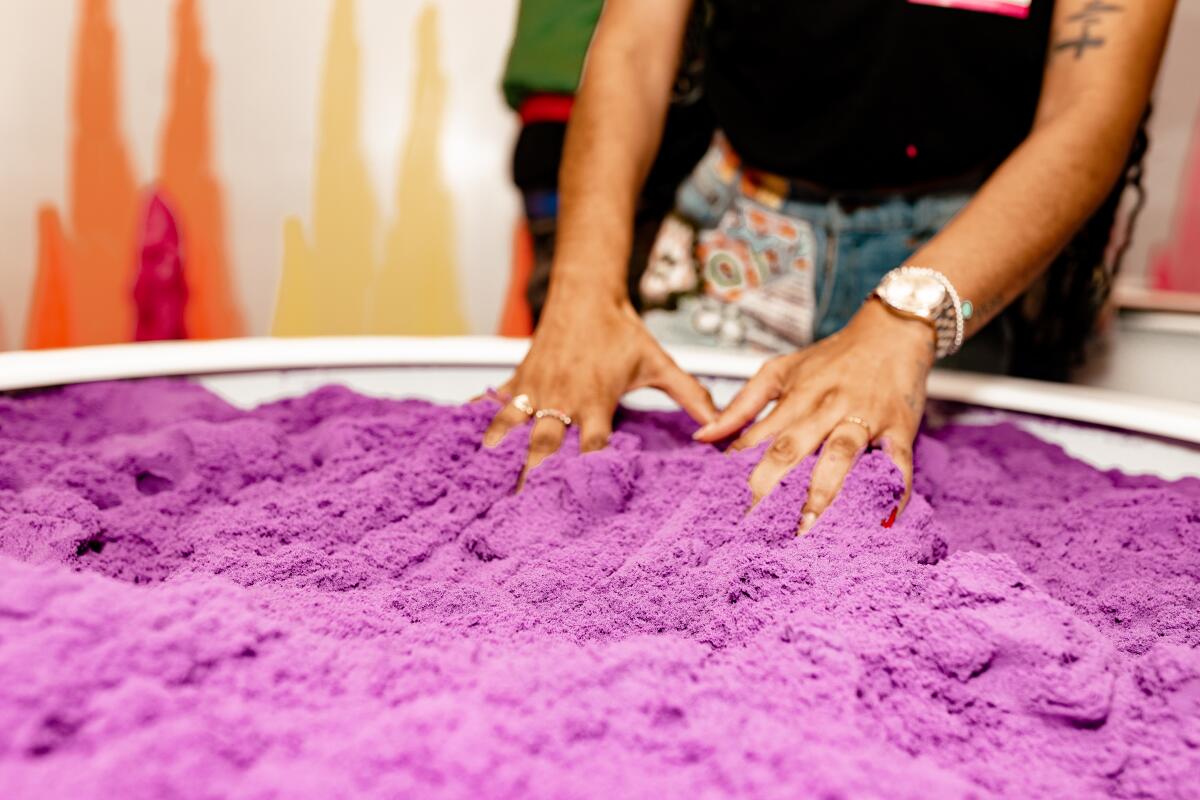
Sensory play is the heart of the museum.
(Sloomoo Institute)
That's not to say that Sloomoo Institutes are purely conscious places for serious play, although there are references to the science of slime and what chemical mixtures can result in a stickier or bubblier substance. With a contemporary, space-age sheen (Robinovitz and Schiller emphasize that they designed the spaces to appeal to adults), Sloomoo Institutes allow unexpected moments to occur: the feeling, for example, of walking barefoot through slime, or installations centered in ASMR that allows guests to experience the pleasant, tingling sound sensations of slime.
Well, mostly pleasant. One of the ASMR sounds asks guests to imagine what it sounds like when Slime farts.
“It's quite a fart soundtrack,” Schiller says. “It is loved by children and adults.”
Gaming may have rejuvenating powers, but no one said it always has to be sophisticated. Sometimes the best healing prescription may be to simply laugh like an 8-year-old.

